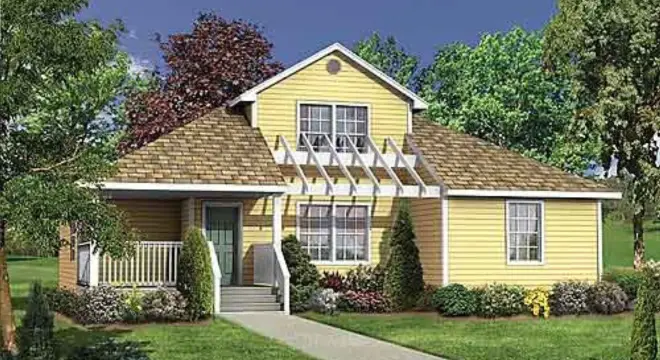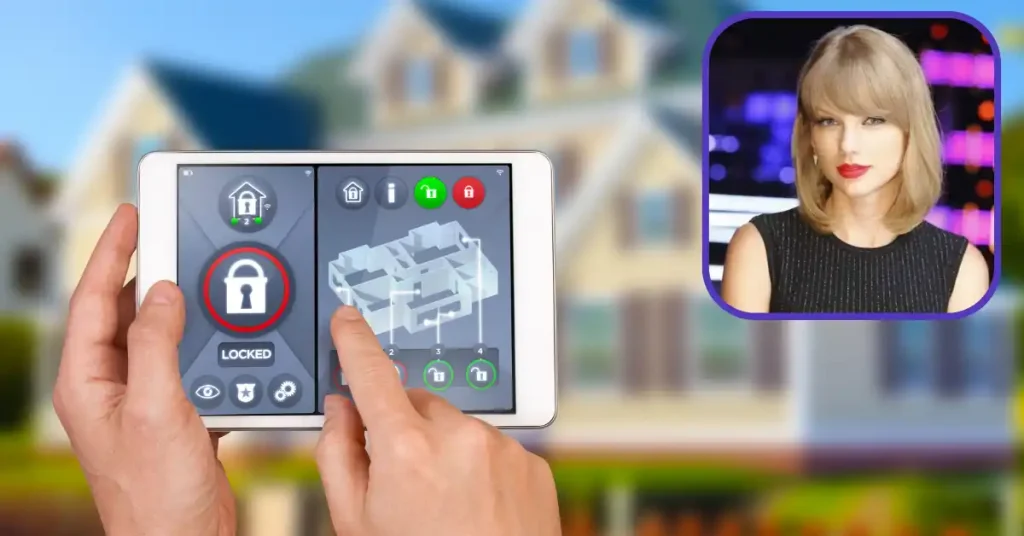Jim Walter Homes – A Unique Approach to Affordable Housing
Have you ever heard of Jim Walter Homes? Why were these houses so popular, and what made them different from traditional homes? Could a home-building company really offer affordable, customizable houses that buyers could finish themselves?
Jim Walter Homes was a well-known home construction company that provided budget-friendly “shell homes“—partially built houses that homeowners could customize and complete on their own. These homes became extremely popular across the U.S., especially for those looking for affordable housing options without sacrificing flexibility.
What made these homes stand out? Their cost-effectiveness, quick construction, and DIY-friendly approach attracted thousands of buyers. But despite their success, the company eventually shut down. In this article, we’ll explore the history, unique features, and lasting impact of Jim Walter Homes.
2. The History of Jim Walter Homes
The Beginning of Jim Walter Homes
Jim Walter Homes started in 1946 in Florida when Jim Walter bought his first house for just $895 and resold it for a profit. Seeing the potential in affordable housing, he launched a business that focused on building low-cost, customizable shell homes that buyers could finish themselves. This concept quickly gained traction, making homeownership accessible to many.
Growth and Peak Popularity
From the 1950s to the 1980s, Jim Walter Homes became one of the largest homebuilders in America. Their success was driven by:
- Zero-down payment options and easy financing, making it easier for middle-class families to buy a home.
- Factory-built components, allowing homes to be assembled quickly.
- Buyers received a basic shell home, which they could complete at their own pace, based on budget and preferences.
- By the 1980s, the company had built over 350,000 homes and was a household name in the U.S.
The Decline and Closure
Despite its massive success, Jim Walter Homes saw a sharp decline in the 2000s due to:
- Changing real estate trends, with buyers preferring modern, fully finished homes.
- A drop in interest in DIY home finishing, which had once been a major selling point.
- By 2009, the company officially shut down, marking the end of an era in affordable home construction.
Even today, thousands of Jim Walter Homes still exist across the U.S., but the business model no longer fits the modern homebuyer’s preferences.
3. What Made Jim Walter Homes Unique?
Jim Walter Homes stood out from traditional homebuilders due to their affordable pricing, customizable approach, and fast construction. Here’s what made them unique:
1. Shell Home Concept – Customization & DIY Finishing
Unlike regular homes, Jim Walter Homes were sold as “shell homes“—partially built houses that included the foundation, walls, roof, and exterior but left the interior unfinished.
- Buyers could customize the interior (flooring, walls, plumbing, and electrical work) as per their needs and budget.
- This approach made homes more affordable while allowing homeowners to add personal touches.
2. Affordable Pricing – Budget-Friendly Homes
One of the biggest reasons for Jim Walter Homes’ popularity was their low-cost housing model.
- The company provided zero-down payment options, making it easier for middle-class families to afford a home.
- Buyers could take financing plans directly from the company, avoiding traditional bank loans.
3. Simple & Functional Designs – Practicality Over Luxury
Jim Walter Homes focused on practical living rather than high-end luxury.
- The designs were basic but efficient, offering a comfortable living space.
- They had straightforward floor plans, making it easy for buyers to plan their interior work.
- Since these homes were prefabricated, they had a uniform structure that was easy to construct and expand.
4. Quick Construction – Faster Home Building
Because Jim Walter Homes used prefabricated materials, construction was much faster than traditional homes.
- The shell structure could be assembled within weeks, allowing homeowners to move in quickly.
- This speed, combined with affordability, made them a popular choice for families looking for quick and cost-effective homeownership.
These unique features made Jim Walter Homes a game-changer in the housing industry, offering a mix of affordability, flexibility, and practicality that appealed to thousands of homeowners.

4. Construction Style and Materials
Jim Walter Homes were built using a simple, durable, and budget-friendly construction approach. These homes relied on prefabricated materials, which made construction faster and more affordable. Let’s take a closer look at their construction style and materials.
1. Materials Used – Affordable but Sturdy
Jim Walter Homes were made with cost-effective yet durable materials to keep prices low while ensuring stability.
- Wood framing – The basic structure was built using wood, making it affordable and easy to construct.
- Plywood walls and paneling – Interior finishing was left to the buyer, who could choose plywood or drywall.
- Asphalt shingle roofing – Lightweight, affordable, and durable roofing material was commonly used.
- Concrete foundation – Provided strong support and stability for long-lasting homes.
2. Standard Layouts and Floor Plans
Jim Walter Homes featured simple, functional floor plans designed to meet the needs of a wide range of buyers.
- Options ranged from small 1-bedroom homes to larger multi-bedroom layouts.
- The open floor plan design allowed homeowners to customize interiors according to their style and needs.
- Additional features like garages, porches, or extra rooms could be included.
- The designs focused on efficiency and practicality, ensuring homes were easy to build and expand.
3. Durability and Quality of Construction
Jim Walter Homes were basic but long-lasting, though they lacked the high-end finishing of luxury homes.
- They were built to withstand harsh weather conditions, but they were not as durable as custom-built homes.
- With proper maintenance, these homes could last for decades, and many are still standing today.
- The strong foundation and roofing ensured stability, while the quality of the interior depended on the materials chosen by the homeowner.
5. Pros and Cons of Jim Walter Homes
Jim Walter Homes had a unique approach to homebuilding, offering affordable, customizable homes that were easy to construct. However, they also had some drawbacks. Let’s explore the pros and cons.
Pros of Jim Walter Homes
- Cost-Effective – These homes were much cheaper than traditionally built houses, making them ideal for budget-conscious buyers.
- Customizable Interiors – Buyers received a shell home and had the freedom to finish the interiors according to their style, needs, and budget.
- Fast Construction – Since these homes used prefabricated materials, the main structure could be completed within weeks, much faster than traditional homes.
- Easy Financing – The company offered financing options with zero down payment, making it accessible to more buyers.
- Expansion-Friendly – Homeowners could easily add rooms or modify layouts later as per their needs.
Cons of Jim Walter Homes
- Basic Designs – The homes had simple, no-frills designs, which lacked the architectural appeal of high-end custom homes.
- Lack of Luxury Features – These homes were built for affordability, so they lacked modern amenities, high-end materials, and luxury finishes.
- DIY Finishing Required – Since buyers had to complete the interiors themselves, it required extra time, effort, and money, which could be challenging for some homeowners.
- Not as Durable as Custom Homes – While sturdy, these homes weren’t as high-quality as fully custom-built houses, and maintenance was essential for longevity.
6. Are Jim Walter Homes Still Relevant Today?
Jim Walter Homes may no longer be in business, but their impact on the affordable housing market remains. Many of these homes still exist, and their concept of cost-effective, customizable homes continues to influence modern homebuilding trends.
1. Do Any of These Homes Still Exist?
Yes, thousands of Jim Walter Homes are still standing across the United States, especially in the Southeast and rural areas where they were most popular.
- Since they were built with durable materials and a solid foundation, many homes have lasted for decades.
- Some homeowners have renovated and modernized their original Jim Walter Homes to keep up with today’s standards.
- However, homes that weren’t properly maintained may show signs of wear and tear due to the basic construction quality.
2. How Do They Compare to Modern Home-Building Trends?
Today’s homebuyers look for energy-efficient, smart, and luxury features, which Jim Walter Homes didn’t originally offer.
- Modern homes focus on high-end materials and smart home technology, whereas Jim Walter Homes were simple and cost-effective.
- Prefab and modular homes have evolved to offer more complete, ready-to-move-in options, reducing the need for DIY finishing.
- The rise of tiny homes and affordable housing movements shows that the concept of low-cost, customizable homes is still relevant, but in a more modern form.
3. Are There Similar Companies Offering the Same Concept Today?
While Jim Walter Homes is no longer operating, several companies still offer affordable, prefabricated homes with customization options.
- Clayton Homes, Champion Homes, and Palm Harbor Homes are some modern companies offering budget-friendly manufactured and modular homes.
- DIY home kits are also available from companies like Lindal Cedar Homes and Amazon prefab home sellers, allowing buyers to customize their homes after purchase.
- However, today’s prefabricated homes often come with pre-installed utilities and finished interiors, unlike Jim Walter Homes, where buyers had to complete the interiors themselves.
7. Conclusion
Jim Walter Homes were unique due to their affordable pricing, shell home concept, and fast construction. They allowed homeowners to customize interiors while keeping costs low, making homeownership accessible to many.
Their impact on the housing industry was significant, influencing prefabricated and modular home trends. The company’s zero-down financing model also inspired future homebuilders.
While homebuyer preferences have evolved, the demand for affordable, customizable homes still exists. If updated with modern features like energy efficiency and smart technology, a concept like Jim Walter Homes could still be relevant today.


